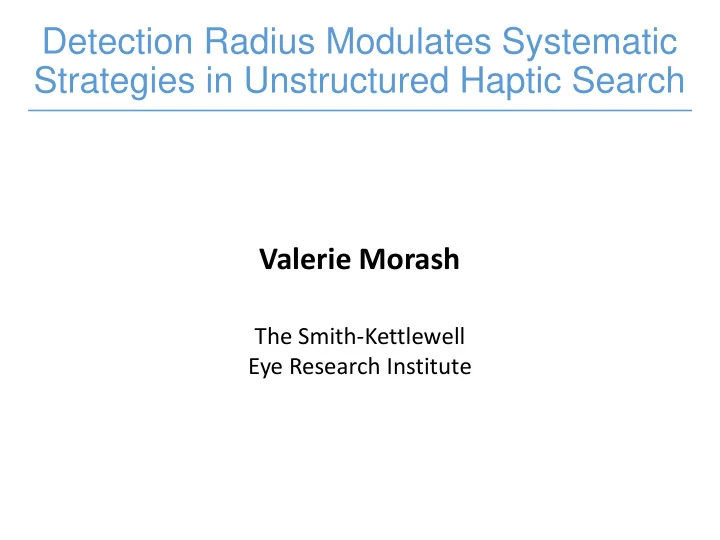

Detection Radius Modulates Systematic Strategies in Unstructured Haptic Search Valerie Morash The Smith-Kettlewell Eye Research Institute
Detection Radius Modulates Systematic Strategies in Unstructured Haptic Search Spoken Notes: Humans sometimes use systematic movement patterns (such as spirals) when searching for targets on a tactile display without vision. What I will present in this talk is a framework for thinking about these movements – which is a framework that motivates these movements as optimal. I will then show you research results that show that hand movements during haptic search are consistent with this framework. The framework I will be using is search theory, which has been developed in operations research and animal ecology. I’m going to start first by talking about search theory: what is a detection radius and what is a systematic strategy, and how they interact. Then, I’m going to talk about the perceptual study.
Detection Radius
Detection Radius • Light (vision) • Sound (hearing or sonar) • Chemical presence (smell) • Heat • Pressure and Touch
Types of Movement Random Brownian Levy Ballistic Systematic
Types of Movement
Research Study 12 inches Stimuli: • Unstructured tactile maps (clear) Task: • Find landmark 12 inches using 1 or 5 fingers Participants: • 9 Blindfolded sighted Data: • Track Index Finger
Research Study
Research Study
Example 1-Finger Search
Example 1-Finger Search
Example Index-Finger Movements One-Finger Five-Finger
Systematic Index-Finger Movements Spirals zigzags or parallel sweeps 99.3% 98.6% kappa = 0.93 kappa = 0.97
Conclusions • There are systematic movements in haptic search of an unstructured display. • The use of systematic movements is consistent with optimal search theory. • Framework for thinking about and modeling finger movements: systematic patterns and random walks Thank You!
Recommend
More recommend